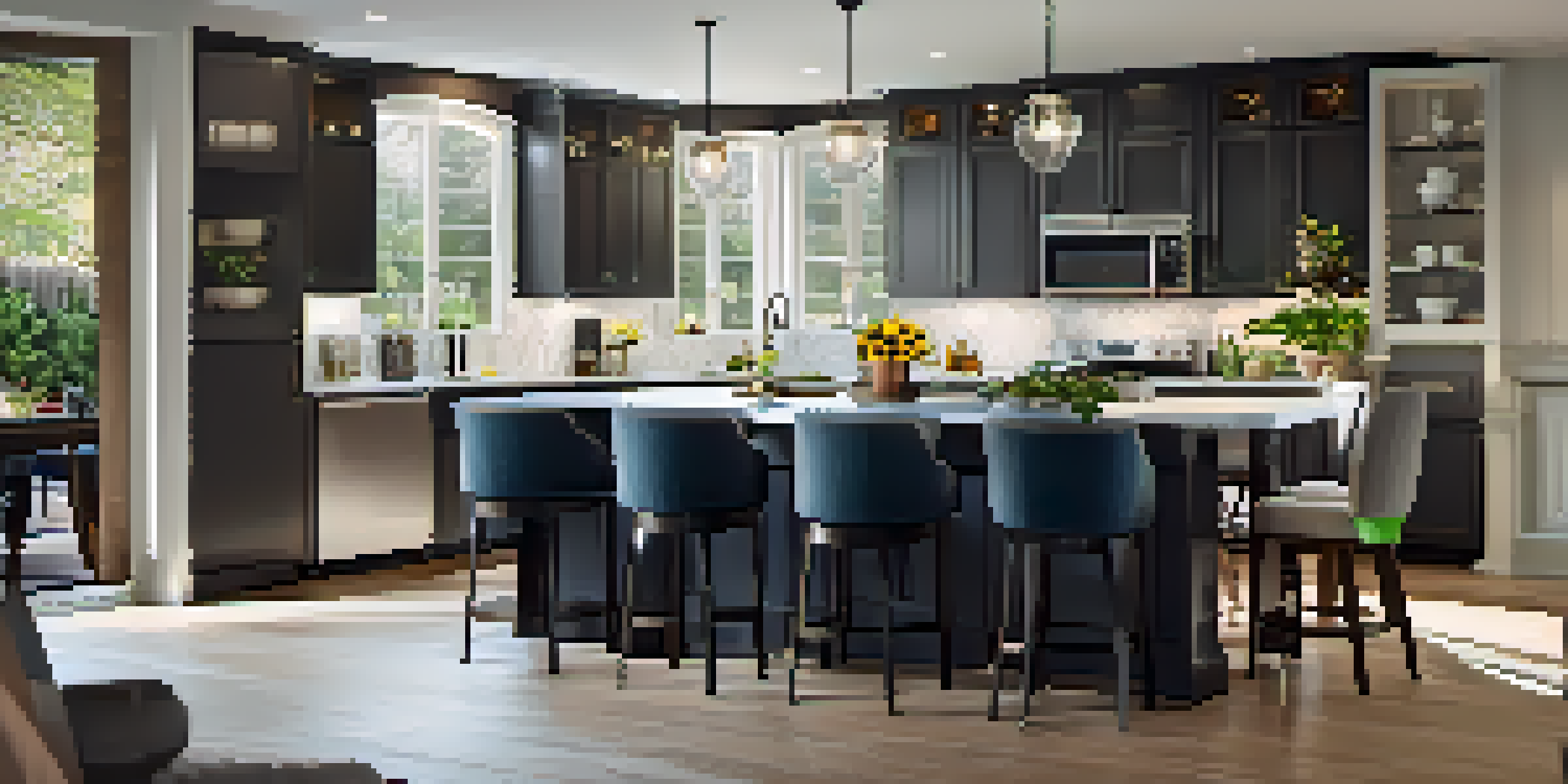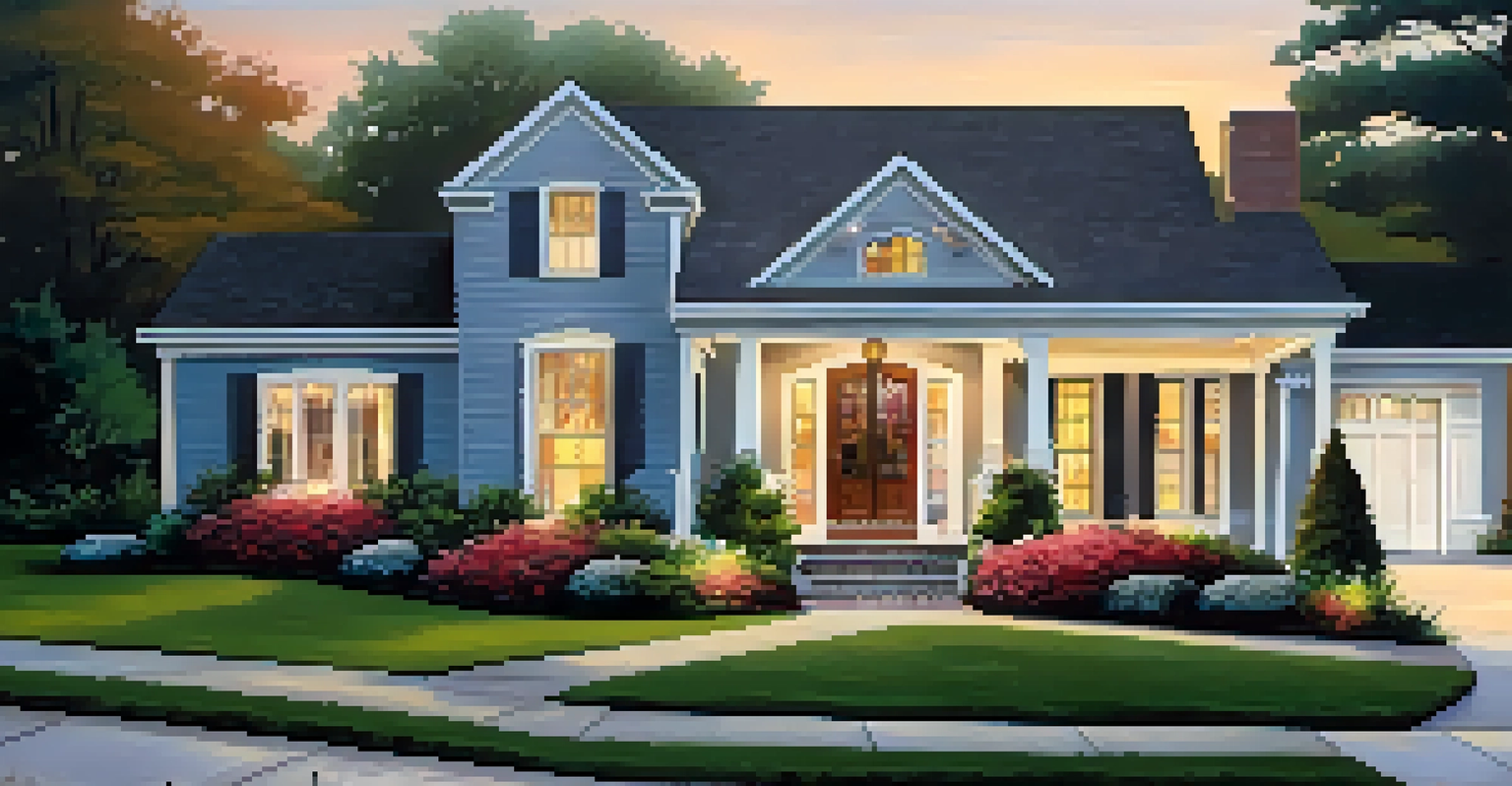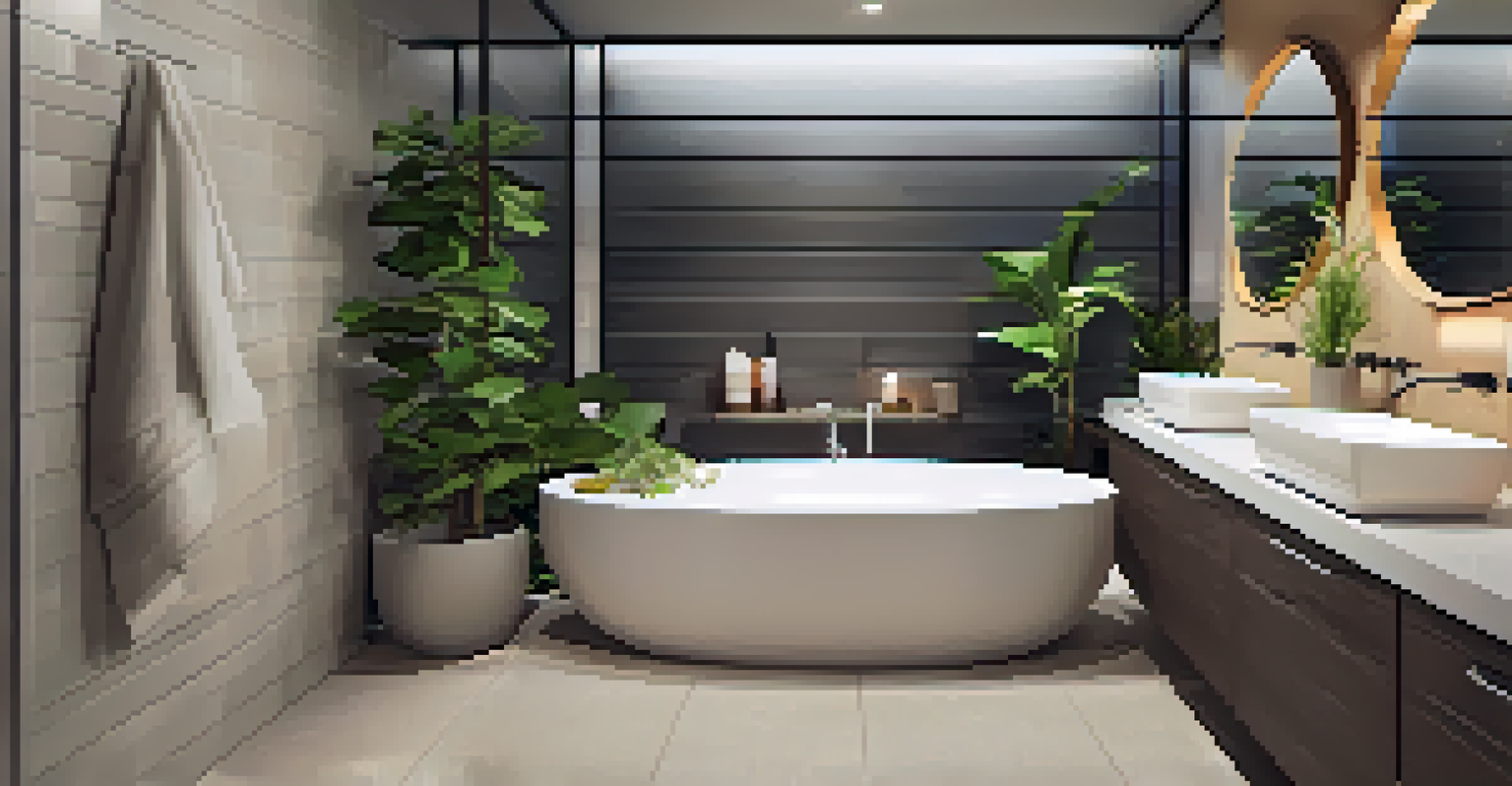Renovating for Resale: How to Maximize Home Value

Understanding the Market: Know What Buyers Want
Before diving into renovations, it's crucial to understand what buyers are looking for in your area. Each market has unique preferences, whether it's modern kitchens or spacious outdoor areas. Researching local trends can save you time and money by focusing on updates that truly resonate with potential buyers.
Home is not a place, it's a feeling.
Consider reaching out to a local real estate agent for insights into popular features in homes that have recently sold. They can provide valuable information about what upgrades buyers are willing to pay more for. For example, in some neighborhoods, energy-efficient appliances are a significant selling point.
By aligning your renovations with buyer preferences, you not only enhance your home's appeal but also increase its marketability. This strategic approach is key in maximizing your return on investment when it comes time to sell.
Curb Appeal: First Impressions Matter
The exterior of your home is the first thing potential buyers will see, so making a good first impression is vital. Simple upgrades like fresh paint, well-maintained landscaping, or a new front door can significantly enhance curb appeal. Think of it as the welcoming smile of your home that invites buyers in.

Consider investing in outdoor lighting or a new mailbox to further elevate the look. These details might seem minor, but they contribute to a sense of care and attention, which buyers appreciate. A well-kept garden or a clean driveway can also set the tone for the rest of the property.
Know Your Market Before Renovating
Understanding local buyer preferences can direct your renovation efforts toward features that truly enhance your home's appeal and marketability.
Remember, a home with great curb appeal not only attracts more interest but can also lead to higher offers. It’s worth putting in the effort to ensure your home stands out in a competitive market.
Kitchen Upgrades: The Heart of the Home
When it comes to renovations, the kitchen often steals the spotlight. It's typically where families gather, making it a central feature in any home. Investing in modern appliances, fresh countertops, or updated cabinetry can dramatically increase your home's value.
Renovation is not just about putting a new coat of paint on the walls; it's about creating a space that reflects who you are.
Even if a full remodel isn't in your budget, minor updates like new hardware or a stylish backsplash can make a big difference. These changes can create an inviting atmosphere that resonates with potential buyers. After all, a well-designed kitchen can be a major selling point.
Ultimately, a stylish and functional kitchen can set your home apart from others on the market, giving you an edge in attracting buyers and securing a better price.
Bathroom Remodels: Transforming Spaces
Bathrooms may be small spaces, but their impact on home value is significant. Buyers often look for clean, modern bathrooms, and a thoughtful remodel can lead to impressive returns. Simple upgrades like new fixtures, fresh tiles, or updated lighting can create a spa-like atmosphere that buyers love.
Consider adding storage solutions like shelving or cabinets to enhance functionality. A well-organized bathroom feels larger and more appealing, which can sway buyer decisions. Even replacing an old toilet can make a big difference in perceived value.
Curb Appeal Boosts First Impressions
Investing in simple exterior upgrades can significantly enhance your home's first impression, attracting more buyers and potentially leading to higher offers.
Investing in bathroom renovations can be one of the most rewarding projects, yielding a high return on investment while elevating the overall appeal of your home.
Creating Open Spaces: The Trend of Modern Living
Today's buyers often seek open, airy living spaces that promote a sense of flow and connection. If your home has closed-off rooms, consider removing non-load-bearing walls to create a more open layout. This can make your home feel larger and more inviting, which is a major selling point.
However, it's essential to maintain a balance; open spaces should still feel functional. Think about how the space will be used and ensure that you’re not sacrificing practicality for aesthetics. An open floor plan can be visually appealing but must also serve the needs of potential buyers.
By creating a more open environment, you not only enhance the livability of your home but also attract a broader range of buyers who appreciate contemporary design.
Energy Efficiency: A Worthwhile Investment
In today's market, energy efficiency is a top priority for many buyers. Upgrading windows, adding insulation, or installing energy-efficient appliances can significantly enhance your home’s appeal. These improvements not only lower utility bills but also promote a sustainable lifestyle, which resonates with many modern buyers.
Consider other eco-friendly upgrades, like solar panels or smart home technology, which can further boost your home's value. These features are not just attractive; they reflect a commitment to responsible living, making your home more desirable.
Energy Efficiency Attracts Buyers
Upgrading to energy-efficient features not only appeals to modern buyers but can also lead to a quicker sale and higher resale value.
Ultimately, prioritizing energy efficiency can lead to a higher resale value and a quicker sale, as buyers increasingly seek homes that align with their values.
Professional Help vs. DIY: Finding the Right Balance
When it comes to renovations, deciding between professional help and DIY projects can be tricky. While DIY can save money, it’s crucial to recognize your limits. Some projects, especially those involving plumbing or electrical work, are best left to the experts to avoid potential issues down the line.
On the other hand, smaller projects like painting or landscaping can be great DIY opportunities that allow you to save costs while adding personal touches. Just be sure to invest time in learning and planning to achieve the best results.

Finding the right balance between professional help and DIY can maximize your renovations’ impact while staying within budget. The key is to be honest about your skills and the potential return on investment for each type of project.